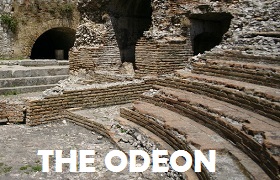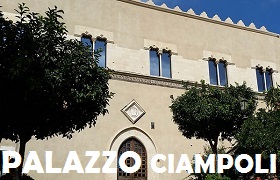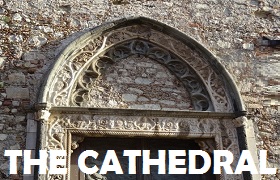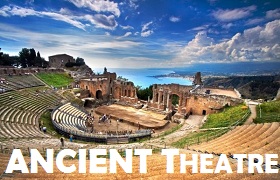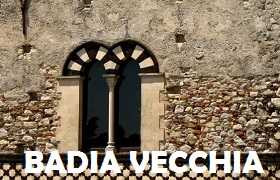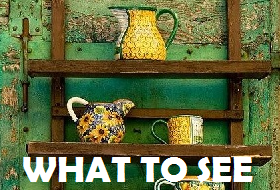TAORMINA
The Cathedral of Taormina
The duomo of Taormina is dedicated to St. Nicholas, with its austere stone façade, the battlements crowning and the massive bell tower that make it resemble a fortress, stands in the charming Piazza del Duomo.
The Cathedral of Taormina, is part of the medieval buildings of Taormina and in its external appearance, it maintains the characteristics of Sicilian Romanesque-Gothic architecture.
The building that is that of the ecclesia munita, the church-fortress, can be dated between the thirteenth and fourteenth centuries, certainly built on a previous medieval basilica. The name of the cathedral was attributed to it because of the importance that Taormina had in the ecclesiastical sphere as the seat of the bishopric and the consecration to San Nicolò di Bari, it is typical of a use in force because of the cult of the saint who was bishop of Mira, in Lycia, today’s Turkey,
Built around 1400 on the remains of a thirteenth century church, duomo of Taormina has undergone several renovations, as evidenced by the main portal of 1636 and the two side portals, the one on the left side, dating back to the fifteenth century and the one on the right side to 1500.
The interior has a Latin cross with three naves and three apses. Six monolithic columns (three on each side) in pink marble surmounted by decorated capitals support the central nave with a wooden ceiling. The sixteenth-century polyptych by Antonello de Saliba is remarkable.
The duomo of Taormina external façade is simple, decorated with a small Renaissance-inspired rose window and two single-light windows. In front of the Duomo you can admire the seventeenth-century Baroque style fountain built on circular steps surrounded by four pretty side fountains.
Note, in the center of the fountain, the symbol of the city of Taormina, or the crowned centaur who holds the world in his left hand and the scepter of command in the right hand.
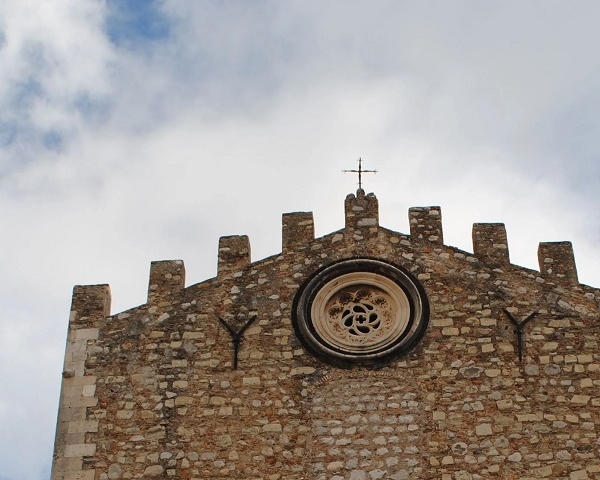


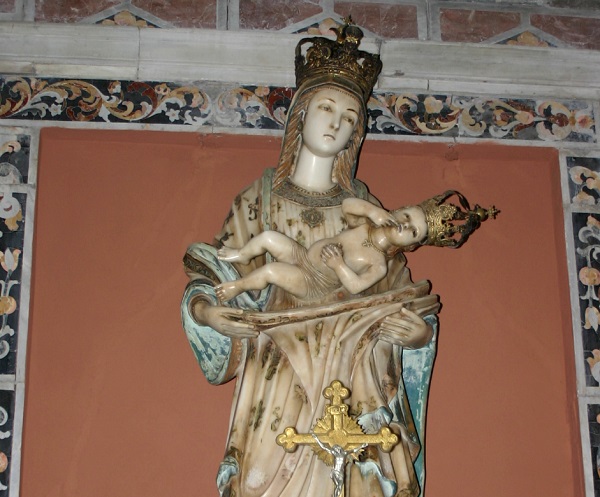
TAORMINA
The Cathedral of Taormina
The duomo of Taormina, a mixture of religious and civil power. The positioning of the Duomo inside the village and in a central position together with Palazzo dei Giurati, with the square that supports the symbolic meaning of religious and civil power, are all elements of the feudal Middle Ages.
The lord, the nobles and the court, in a state-owned city such as Taormina, subject to royal power, need to connect with the ecclesiastical authorities to give strength to what they represent, namely, the Christian community governed by precise rules in which the divine and the cult, serve to magnify not only the work of God but that of who, it is an expression of it on earth. The nobles, together with the religious, use a language that translates into architectural and artistic forms, therefore, the exterior of the Duomo and its interiors tell of civic and religious power.
There are two funeral mausoleums, just entered the building, the one on the right, by Leonardo Sgroi Camiola and the one on the left, by Antonio San Martino De Spuches, lived in the nineteenth century and linked to the ancient noble families of the city. The mausoleums represent the language of those who have enjoyed importance and prestige and turn to the people to keep their memories alive.
The interior of the duomo of Taormina is typical of medieval architecture, with a Latin cross design with three naves and three apses. The central nave receives support from six columns, three on each side, on which four arches rise. The pink marble columns of Taormina, see four of them made from a single block of marble, called “monolithic”, whose provenance is attributed to the Ancient Theater.
The wooden roof covers the central nave, the transept and the short arm of the Latin cross. At the back, in the three apses, the altar opens in the central one and the two chapels are carved into the two side ones. On the left, the chapel of the Sacrament of the late seventeenth century and respectful of the Baroque style; to the right, the chapel of the Madonna delle Grazie, rebuilt in 1747 with material from a chapel of the church of San Pietro fuori le mura.
After the bombings, which affected the area of Porta Catania in July 1943, also the duomo of Taormina in the period from 1945 to 1948, was subjected to restoration by the Neapolitan architect Armando Dillon, who, as performed on Palazzo Corvaja , returned the original medieval structures, bringing back the Gothic atmospheres in the church building. An example is the arches of the apse that had been hidden by the Baroque stuccos, and the terrazzo coverings of the side aisles.
TAORMINA
The Cathedral of Taormina
The Duomo of Taormina, could be a museum inside a religious building. Inside the church a series of works of great artistic value are collected, ranging from the Byzantine period to the Renaissance, to reach the Baroque. In the right nave, there is the Visitation with San Gregorio and San Zaccaria by Antonino Juffrè, a work from 1457, which is currently not present because it was being restored.
The painting belongs to the Renaissance Sicilian school and originally, it was located in the church of the Varò. Full renaissance, is that expressed in the Polyptych of Antonello de Saliba of 1504, work of the school of Antonello da Messina, of which the Saliba was relative and that it has flowering in all the Sicilian courts. It is a work on wood with several panels, with the Virgin Mary and Jesus in the central panel between St. Jerome and St. Sebastian.
Above, in the center, the Deposition of Christ and on the sides San Agata and Santa Lucia, venerated in the eastern part of the island. In the lower frame below, the Last Supper. The Polyptych comes from the former Church of San Sebastiano, used by the Augustinian friars, in Piazza IX Aprile.
Inside the Cathedral, you can also see various oil paintings with the classic religious iconography depicting scenes of saints and evangelical scenes, the chiaroscuro of the Baroque time like that of the artist Garofalo, a 1653 work, depicting St. Nicholas of Bari. again, in the left aisle, return to the Renaissance with the Madonna and Child of the sixteenth century, by the artist Alfonso Franco, where Maria is at the center of the scene, protected by St. John the Baptist and the prophet Elias.



TAORMINA
The Cathedral of Taormina
The Byzantine Madonna and the throne of the Jurors. Visible in the right aisle, the non-manufactured Madonna, work painted on wood with silver ornamental motifs like the rich dress of Maria that responds to the characteristics of the Byzantine goldsmith and pictorial art. A dedication and a prayer to the Virgin by the Jurors for having spared the city, from the nefarious earthquake that destroyed many cities in eastern Sicily including Catania, Ragusa and Noto.
Where there is the altar, instead, you can admire the column-bearing lions with the coat of arms of the Centauressa that are part of the throne of the Jurors, whose original function could have been to hold a sarcophagus. The two lions also come from the workshop of Domenico Gagini. Even the statue of the Madonna delle Grazie, placed in the chapel of the same name with its rich and full of detail, the softened face of the Madonna and Child, make it resemble another work of the workshop, that of the Madonna della Scala in the Mother Church of Ucria.
The patrons of the Madonna delle Grazie are from the Grugno family, originally from Catalonia and arrived in 1347; whose coat of arms with the three heads of wild boar can be seen on both sides of the base of the statue.
TAORMINA
The Cathedral of Taormina
The statue of Saint Agatha, is located in the right aisle near the entrance. It was located in the destroyed church of Sant’Agata, of the convent of San Domenico and after the bombing of 9 July 1943, it was moved to the Duomo.
The fact that there was a church dedicated to the saint loved by the people of Catania, with a statue, is linked to a legend and to the cult of Agata, widespread also in the city. A tradition reported by Francesco Cipolla, wants that the grubbing up of the breasts with the pincers, took place here in Taormina at a point on the mule track that descends from the cemetery down to Spisone, where a taorminese limestone called would have been identified “a ciappa i Sant’Aita”.
This would thus have been the place where, at the beginning of the 4th century, under Diocletian, Agatha would have suffered martyrdom. Most likely, it is the importation of the cult in the city, by a family that had ties to Catania, or Corvaja. The 16th century statue was unanimously attributed to Montanini, Montorsoli’s favorite pupil of which one of the most significant examples is the Fountain of Orion, in Piazza Duomo, in Messina.
The commission is from the Corvaja family because at the base of the statue, there is the “flags” coat of arms which is also found in Palazzo Corvaja, on the entrance door of Palazzo Ciampoli and which is identified as the oldest emblem of this family; although in the heraldry the other coat of arms is better known, in which the Weapon is blue with the band accompanied by the two lions that hold a golden crown between the legs.
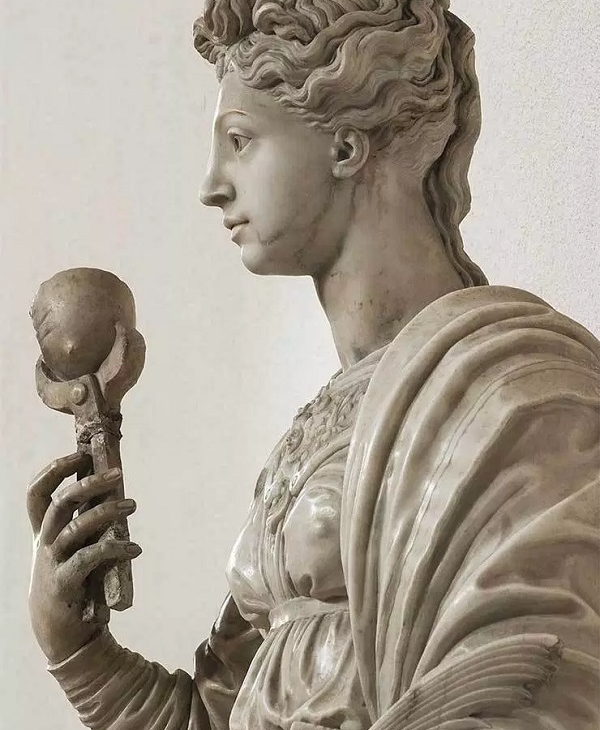
.










